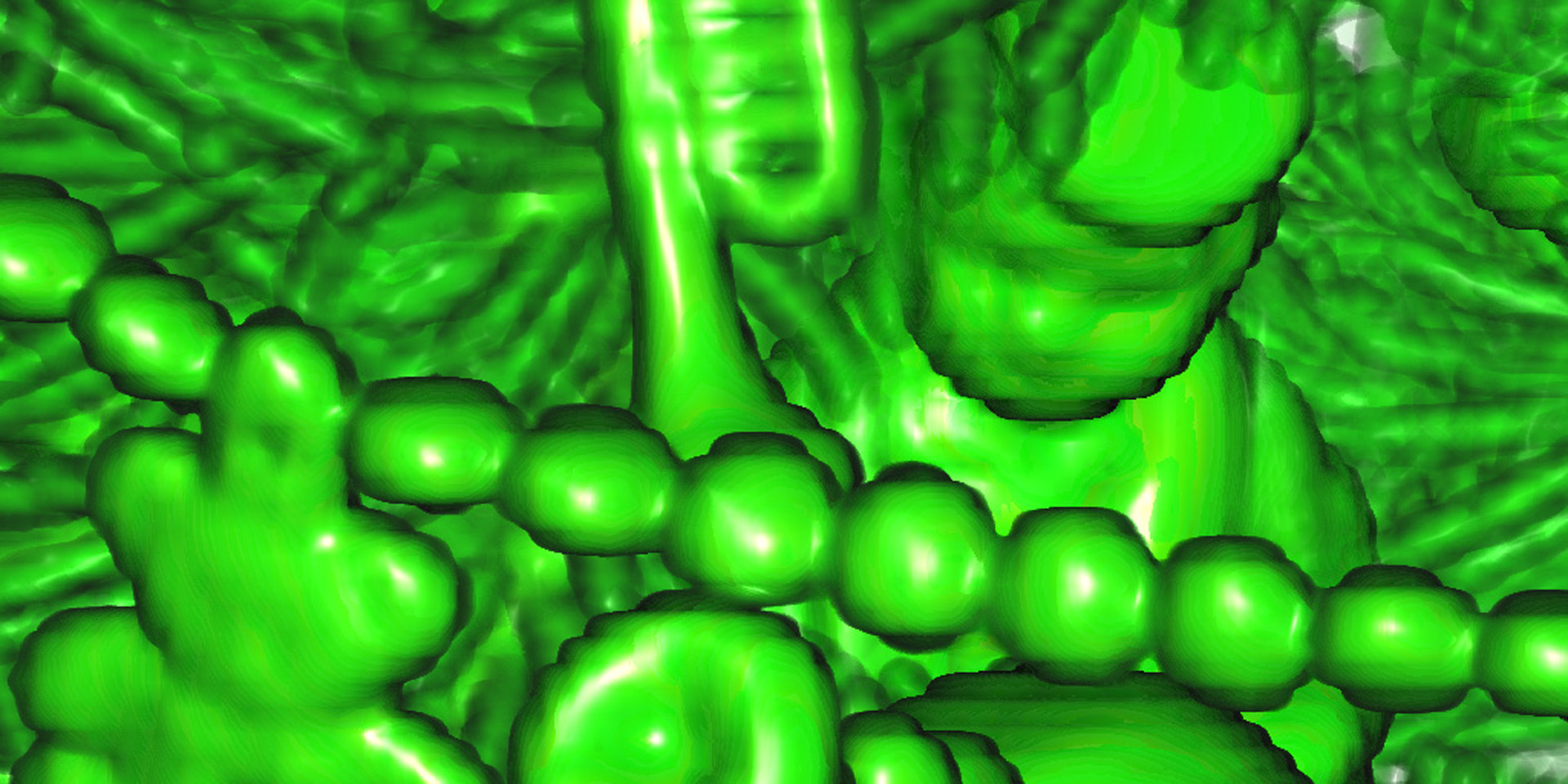“Beyond trilinear interpolation: higher quality for free” by Csébfalvi
Conference:
Type(s):
Title:
- Beyond trilinear interpolation: higher quality for free
Session/Category Title: High Performance Rendering
Presenter(s)/Author(s):
Abstract:
In volume-rendering applications, it is a de facto standard to reconstruct the underlying continuous function by using trilinear interpolation, and to estimate the gradients for the shading computations by calculating central differences on the fly. In a GPU implementation, this requires seven trilinear texture samples: one for the function reconstruction, and six for the gradient estimation. In this paper, for the first time, we show that the six additional samples can be used not just for gradient estimation, but for significantly improving the quality of the function reconstruction as well. As the additional arithmetic operations can be performed in the shadow of the texture fetches, we can achieve this quality improvement for free without reducing the rendering performance at all. Therefore, our method can completely replace the standard trilinear interpolation in the practice of GPU-accelerated volume rendering.
References:
1. T. Blu, P. Thévenaz, and M. Unser. 1999. Generalized Interpolation: Higher Quality at no Additional Cost. In Proceedings of IEEE International Conference on Image Processing. 667–671.Google Scholar
2. T. Blu and M. Unser. 1999a. Approximation Error for Quasi-Interpolators and (Multi-)Wavelet Expansions. Applied and Computational Harmonic Analysis 6, 2 (1999), 219–251.Google ScholarCross Ref
3. T. Blu and M. Unser. 1999b. Quantitative Fourier Analysis of Approximation Techniques: Part I – Interpolators and Projectors. IEEE Transactions on Signal Processing 47, 10 (1999), 2783–2795. Google ScholarDigital Library
4. B. Cabral, N. Cam, and J. Foran. 1994. Accelerated Volume Rendering and Tomographic Reconstruction Using Texture Mapping Hardware. In Proceedings of IEEE Symposium on Volume Visualization. 91–98. Google ScholarDigital Library
5. E. Catmull and R. Rom. 1974. A Class of Local Interpolating Splines. Computer Aided Geometric Design (1974), 317–326.Google Scholar
6. L. Condat, T. Blu, and M. Unser. 2005. Beyond Interpolation: Optimal Reconstruction by Quasi-Interpolation. In Proceedings of the IEEE International Conference on Image Processing. 33–36.Google Scholar
7. B. Csébfalvi. 2008. An Evaluation of Prefiltered Reconstruction Schemes for Volume Rendering. IEEE Transactions on Visualization and Computer Graphics 14, 2 (2008), 289–301. Google ScholarDigital Library
8. B. Csébfalvi. 2018. Fast Catmull-Rom Spline Interpolation for High-Quality Texture Sampling. Computer Graphics Forum (Proceedings of EUROGRAPHICS) 37, 2 (2018), 455–462.Google ScholarCross Ref
9. K. Engel, M. Hadwiger, J. Kniss, C. Reck-Salama, and D. Weiskopf. 2006. Real-Time Volume Graphics. AK Peters Ltd. Google ScholarDigital Library
10. M. Hadwiger, P. Ljung, C. Reck-Salama, and T. Ropinski. 2009. Advanced Illumination Techniques for GPU-based Volume Raycasting. In ACM SIGGRAPH 2009 Course Notes. Google ScholarDigital Library
11. M. Hadwiger, C. Sigg, H. Scharsach, K. Bühler, and M. Gross. 2005. Real-Time Ray-Casting and Advanced Shading of Discrete Isosurfaces. Computer Graphics Forum 24, 3 (2005), 303–312.Google ScholarCross Ref
12. R. G. Keys. 1981. Cubic Convolution Interpolation for Digital Image Processing. IEEE Transactions on Acoustics, Speech, and Signal Processing ASSP-29, 6 (1981), 1153–1160.Google ScholarCross Ref
13. J. Krüger and R. Westermann. 2003. Acceleration Techniques for GPU-based Volume Rendering. In Proceedings of IEEE Visualization. 38–45. Google ScholarDigital Library
14. A. Li, K. Mueller, and T. Ernst. 2004. Methods for Efficient, High Quality Volume Resampling in the Frequency Domain. In Proceedings of IEEE Visualization. 3–10. Google ScholarDigital Library
15. S. Marschner and R. Lobb. 1994. An Evaluation of Reconstruction Filters for Volume Rendering. In Proceedings of IEEE Visualization. 100–107. Google ScholarDigital Library
16. D. Mitchell and A. Netravali. 1988. Reconstruction Filters in Computer Graphics. In Proceedings of SIGGRAPH. 221–228. Google ScholarDigital Library
17. T. Möller, R. Machiraju, K. Mueller, and R. Yagel. 1997. Evaluation and Design of Filters Using a Taylor Series Expansion. IEEE Transactions on Visualization and Computer Graphics 3, 2 (1997), 184–199. Google ScholarDigital Library
18. T. Möller, K. Mueller, Y. Kurzion, R. Machiraju, and R. Yagel. 1998. Design of Accurate and Smooth Filters for Function and Derivative Reconstruction. In Proceedings of IEEE Symposium on Volume Visualization. 143–151. Google ScholarDigital Library
19. W. K. Pratt. 2001. Digital Image Processing. John Wiley & Sons, Inc. Google ScholarDigital Library
20. D. Ruijters, B. M. ter Haar Romeny, and P. Suetens. 2008. Efficient GPU-Based Texture Interpolation using Uniform B-Splines. Journal of Computer Tools 13, 4 (2008), 61–69.Google Scholar
21. C. Sigg and M. Hadwiger. 2005. Fast Third-Order Texture Filtering. In GPU Gems 2: Programming Techniques for High-Performance Graphics and General-Purpose Computation. Matt Pharr (ed.), Addison-Wesley, 313–329.Google Scholar
22. G. Strang and G. Fix. 1971. A Fourier Analysis of the Finite Element Variational Method. In Constructive Aspects of Functional Analysis. 796–830.Google Scholar
23. T. Theußl, H. Hauser, and M. E. Gröller. 2000. Mastering Windows: Improving Reconstruction. In Proceedings of IEEE Symposium on Volume Visualization. 101–108. Google ScholarDigital Library
24. R. Westermann and T. Ertl. 1998. Efficiently Using Graphics Hardware in Volume Rendering Applications. In Proceedings of SIGGRAPH. 169–176. Google ScholarDigital Library




